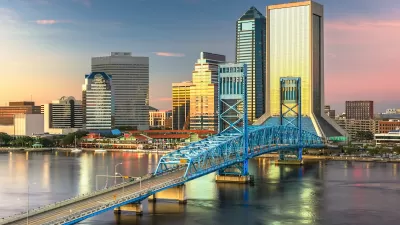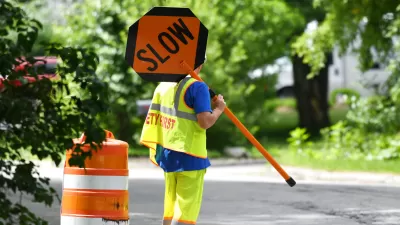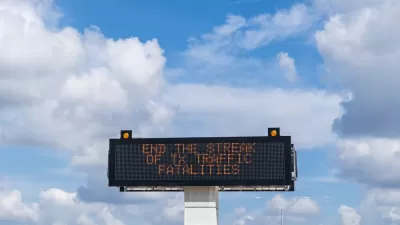Unlike in comparable countries, U.S. pedestrians are most likely to die in traffic crashes during nighttime hours.

Building on prior research on the growing U.S. pedestrian safety crisis, a New York Times article by Emily Badger, Ben Blatt, and Josh Katz highlights the high number of deaths that occur at night. “In 2021, more than 7,300 pedestrians died in America — three in four of them during the hours between sunset and sunrise.”
This stands in contrast with other countries. “In places like Canada and Australia, a much lower share of pedestrian fatalities occurs at night, and those fatalities — rarer in number — have generally been declining, not rising.”
Researchers say that they largely missed this trend until recently. “Federal data that tracks every roadway fatality makes clear that the problem is not just about the behaviors and routines that happen to occur around nighttime (leaving work, for example, or going to bars). It is darkness itself that matters.” This is likely in part because pedestrians are harder to see at night, and “American roads also weren’t particularly engineered with this risk in mind.”
According to David Strayer, a psychologist at the University of Utah, “What has changed is the amount of technology that we’re surrounding ourselves with.” Combined with the pervasiveness of automatic transmissions, the proliferation of smartphones in the United States has made drivers more distracted, while the growing size of vehicles makes drivers less likely to see pedestrians.
The article details other potential factors, such as population growth in areas with poor pedestrian infrastructure. Ultimately, the authors conclude, better infrastructure designed with these potential risks in mind could save lives. “A transportation system that’s safer by design — as in many European countries — might better absorb any one of these dangers. Distracted drivers are safer at lower speeds. People out at night are safer with well-lit crosswalks.”
FULL STORY: Why Are So Many American Pedestrians Dying at Night?

Planetizen Federal Action Tracker
A weekly monitor of how Trump’s orders and actions are impacting planners and planning in America.

Chicago’s Ghost Rails
Just beneath the surface of the modern city lie the remnants of its expansive early 20th-century streetcar system.

San Antonio and Austin are Fusing Into one Massive Megaregion
The region spanning the two central Texas cities is growing fast, posing challenges for local infrastructure and water supplies.

Since Zion's Shuttles Went Electric “The Smog is Gone”
Visitors to Zion National Park can enjoy the canyon via the nation’s first fully electric park shuttle system.

Trump Distributing DOT Safety Funds at 1/10 Rate of Biden
Funds for Safe Streets and other transportation safety and equity programs are being held up by administrative reviews and conflicts with the Trump administration’s priorities.

German Cities Subsidize Taxis for Women Amid Wave of Violence
Free or low-cost taxi rides can help women navigate cities more safely, but critics say the programs don't address the root causes of violence against women.
Urban Design for Planners 1: Software Tools
This six-course series explores essential urban design concepts using open source software and equips planners with the tools they need to participate fully in the urban design process.
Planning for Universal Design
Learn the tools for implementing Universal Design in planning regulations.
planning NEXT
Appalachian Highlands Housing Partners
Mpact (founded as Rail~Volution)
City of Camden Redevelopment Agency
City of Astoria
City of Portland
City of Laramie





























